I often read about “hanging a fly under an indicator”. I don’t get it. If the fly is hanging, it must be heavy, and if the indicator is holding it up, it must be HUGE. Maybe its just a turn of phrase. I did however try casting a thingamabobber the other day. That would hold a fly up. It was the smallest one you could get.
It was like trying to throw one of those practice golf balls. It made a lot of noise, and went nowhere. When it did land it was with a great big PLOP. No thanks.
I like my indicators small. PD says you need binoculars to see them, and that it kinda defeats the object. He is right. I know that because I am using the New Zealand strike indicator tool and system, and I don’t put enough yarn, so it doesn’t wedge on the leader, and instead slides up and down. “Short and stubby” I keep telling myself.
Put more yarn, but still trim it short enough that PD will shake his head. Then it will be delicate for presentation purposes.
If you are struggling to see it, try using two contrasting colours, like chartreuse and orange. I find that works a treat after mid day when it gets silvery on the water. That is when the orange comes into its own.
If the indicator is sinking, even though you have pre-treated it with “waterwhisp” and greased it heavily, then consider that maybe the fly is pulling it under.
Rather than lowering yourself to a thingamabobber, try moving it further up the leader. In this way your fly will be banging along the bottom, and all that the indicator will be supporting is the tippet.
Remember that a light tippet will generate less resistance in the current, and that a drag free drift will be further cause for the indicator to stay on top.
Of course depth varies all the time, so if you are not changing the position of your indicator all the time, you will be getting this formula wrong on just about every drift. I move mine at just about every change in the water type. In other words when I go from a tail-out to a deep pool, or from a pool to a rapid, to pocket water. This is why the latest indicators are such a great thing: you can move them with ease, and so long as you use enough yarn, they stick where you put them! I also find that by having to consider where the indicator should be, it causes you to focus on the water depth. I estimate the depth in a run, set the indicator position, and fish it. Then I wade on up through that run, and get to see how deep the water really was. This goes into that computer they call my head, and with a bit of luck, I get better at estimating depth. When the fish are hugging the bottom, as they so often are, guessing that depth right is an important part of fish catching.
Perhaps a more important part of fish catching, is not focusing on the strike indicator alone. That is more difficult than it sounds. Typically after a day on the river, I fall asleep with the rhythmical images of the same strike indicator floating back at me time and time again.
If that dream occupies most of your night, you may need to shake out of this bad habit, like I need to. I think it was Tom Sutcliffe who wrote about trying to watch the fly (or the fly’s zone) and the indicator simultaneously. It is a lot like looking through a microscope with one eye, and keeping the other one open to do the sketch. Guys who did Biology at school might remember being taught that skill. In the “fly zone” you are looking for movement of any kind. An opening mouth, a darting shadow, a ripping tippet. It could be anything. If it is subtle you might not strike. If it is definite, you will. If it is subtle, but the indicator moves in a subtle way too, you will likely strike into a fish that you might otherwise have missed. This is all a bit like those dual garden beams of mine, that require a signal from both sensors before triggering. This avoids birds. We don’t want birds either. We want fish. And if your dream is of the indicator drifting undisturbed towards you every time, then you haven’t been catching fish, have you!
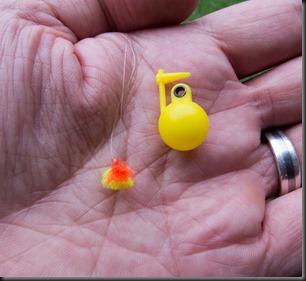
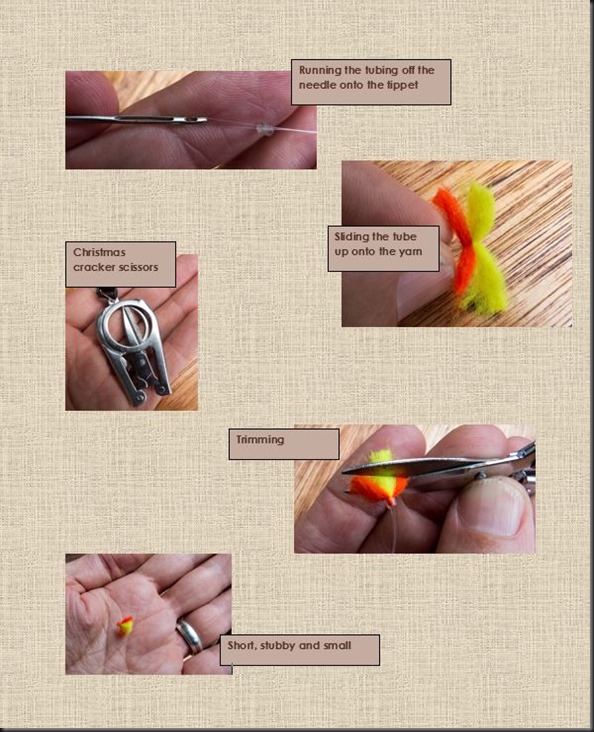
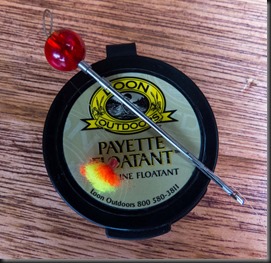
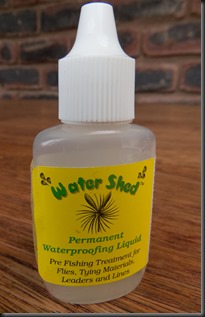
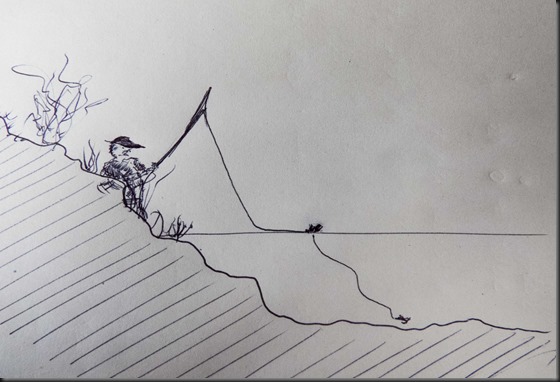
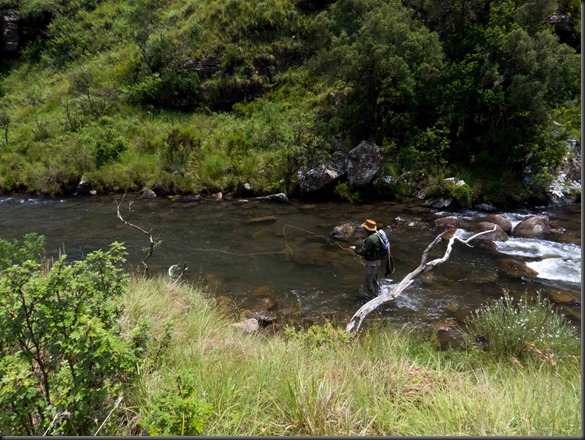
7 Responses
I am not a fan of the thingamabobber like you said too heavy; I do like the yarn like you are using, but my favorite is the stick on, like the yarn easy to slide up and down on your line. Thanks for sharing
Thanks Loyd. I must try those stiick-ons! Jan Korrubel suggests them too.
I wish more people would think on these things so well done. The truth is that with an indicator in any degree of current there are ONLY two possible options, based in the differential between current speed at depth and on the top. Either the indicator gets pulled under, or the fly gets dragged at unnatural speed. In moderate flows and relatively shallow water indicators are of great value but you will never be able to fish deep in even moderately fast water with an indicator. This is primarily the reason for the development of “Euro-nymphing methods”. So yes absolutely indicators have a place but they, like pretty much everything else, have limitations and anglers are best advised to try to understand those limitations if they wish to improve their catch rates. Nice blog and thanks for sharing and stimulating the discussion.
Thank your for your kind words and contribution Tim. I agree with your observations on drag, and omitted to mention in the article that in really deep pools, I remove the indicator for that reason. For the rest of the time drag always remains a challenge, and I believe that the trick is throwing enough slack into the tippet between the indicator and the fly, to attempt at least some drag free drift with the indicator still riding free. Those drifts are indeed short at best, and my skills at throwing the slack into the part of the tippet where I want it, are the limiting factor for me. I also quickly fall into the trap of trying to use an indicator in all circumstances, or relying on it too heavily.
I’m new to Thingamabobbers, so this was a good lesson learned now. Thanks!
A pleasure Howard.